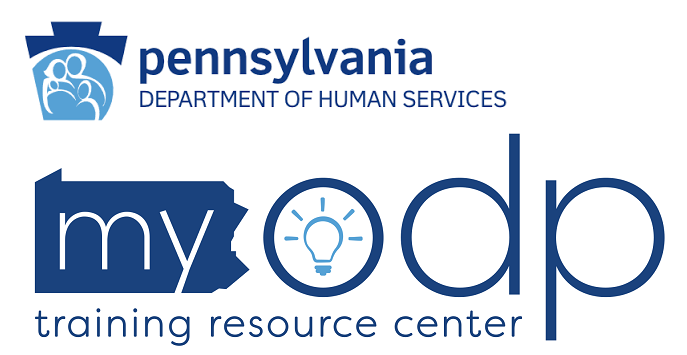Positive Approaches Journal, Volume 12, Issue 3
Positive Approaches Journal | 7-13

Volume 12 ► Issue 3 ► November 2023
Data Discoveries
The goal of Data Discoveries is to present useful data using new methods and platforms that can be customized.
Suicide is a leading cause of death in the United States and suicide rates have increased about 36% since 2000.1 Suicide was the cause of death for more than 48,000 people in the US in 2021 alone, which translates roughly to one death every 11 minutes.1 Suicide impacts people of all ages. It is the second leading cause of death for children aged 10-14 and young adults between 20-34 years old.1 Millions of people attempt or make a plan to attempt suicide each year. In an effort to address this mental health crisis, the United States Substance Abuse and Mental Health Services Administration's (SAMHSA) Center for Mental Health Services launched a revamped three-digit crisis and suicide lifeline: 988.2 The 988 crisis and suicide lifeline was launched in 2022 in an attempt to streamline support for people across the U.S. and provide resources to individuals experiencing a mental health crisis and those worried about someone experiencing a mental health crisis. The new abbreviated number was designed to be easy for people to remember during a crisis and to reduce barriers to support .3 988 , is a distinctive service because it offers "someone to talk to" , connecting individuals in crisis to trained counselors who provide emotional support and assistance. Over 98% of issues are resolved at the initial contact, eliminating the need for further dispatch of additional services.4 People can call, text, or chat online with a trained crisis counselor who will listen, provide support, and connect them with resources, as opposed to a 911 dispatcher who will engage other services like police or emergency medical services that may not be necessary.2
As 988 roll-out continues nationally, efforts to fund outreach will be critical to ensuring community awareness.3 Addressing misconceptions about mental health and suicide and spreading awareness about 988 through media channels is crucial to ensure connections to this important service, especially among people in minoritized and marginalized communities, such as in Black and Hispanic populations and people in the LGBTQI+ community.3 There are also gaps in funding that have made it challenging for states to effectively staff 988 call centers to answer calls, texts, and chats, which may be resulting in lower call answer rates in states like Alaska, Arkansas, Alabama, and South Carolina.5 However, it is important to note that calls not answered at the state leve, may be transferred to a national call center to be answered, in order to provide support to the caller.3 Finally, data collection regarding 988 usage, caller demographics, and the effectiveness of the provided support can be used to improve services, identify trends, and allocate resources more efficiently.3
The data dashboard presented below provides information and data about 988 and suicide in the U.S. The first tab provides age-adjusted suicide rates from 2010 to 2021 (rate per 100,000 population), including the percent change over that time per state in the U.S. The second tab has data on the variation between states in the percentage of calls answered out of the calls to 988 that were made. Finally, the third tab has links to resources relevant to 988 and suicide prevention.
Conclusion
The Autism Services, Education, Resources, and Training Collaborative (ASERT) is a resource and information hub geared towards autistic individuals and those with other intellectual and developmental disabilities (IDD) and their family members, providers, and other supporters. ASERT has created a host of resources focused on mental health, including Be Well, Think Well, a resource collection designed to increase understanding of the impact of mental health diagnoses on autistic individuals. This bundle includes social stories created for autistic people, information about suicide and emergency situations, and more. The Policy Impact Project, an initiative out of the Policy & Analytics Center (PAC) at Drexel University, is focused on translating important policy information impacting autistic people and people with IDD into lay-friendly resources. This includes a series of blog posts focused on 988, including an overview of the program and unpacking some of the complexities and areas for growth.
References
1. Centers for Disease Control and Prevention (CDC). Facts About Suicide Accessed 2 October 2023, Centers for Disease Control and Prevention Facts About Suicide.
2. Substance Abuse and Mental Health Services Administration's (SAMHSA). 988 Suicide & Crisis Lifeline. Accessed 2 October 2023, 988 Suicide and Crisis Lifeline.
3. Caron C. Is the New 988 Suicide Hotline Working? The New York Times. Is the New 988 Suicide Hotline Working?
4. National Council for Mental Wellbeing. 988 and 911: Similarities and Differences. Accessed 10 October 2023, Similarities and Differences Between 988 and 911.
5. Saunders H. Taking a Look at 988 Suicide & Crisis Lifeline Implementation One Year After Launch. Kaiser Family Foundation (KFF). Accessed 2 October 2023, Taking a Look at 988 Suicide & Crisis Lifeline Implementation.




